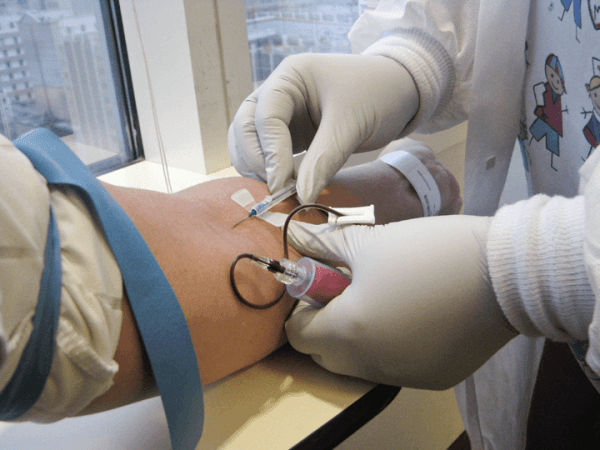Addison’s disease is a disorder caused when your adrenal glands (located on your kidney) cannot make cortisol or aldosterone. To understand the disease, let’s take a look at some anatomy.
The adrenal glands have two parts: the interior (medulla) which produces adrenaline-like hormones; and the outer layer (cortex) which produces a group of hormones known as corticosteroids as well as androgens (male sex hormones). The adrenal glands are important in secreting hormones, such as cortisol and aldosterone, which are related with stress levels in the body. These hormones affect every organ and tissue in the body.
The adrenal gland also works with your pituitary gland in your brain. The pituitary gland makes adrenocorticotropic hormone (ACTH), a hormone that tells the adrenal cortex to make its hormones.
In patients suffering from Addison’s disease, the adrenal glands fail to function at adequate efficiency. There are two types of adrenal insufficiency: Primary and Secondary.
Primary Adrenal Insufficiency
This type of Addison’s disease occurs if the cortex, or outer layer, of the adrenal glands is damaged and therefore cannot produce the adequate quantities of cortisol and aldosterone. Primary Adrenal Insufficiency usually results from an autoimmune disease (where the body attacks itself). In fact, President John F. Kennedy’s Addison’s disease is thought to have been caused by an autoimmune disorder called Autoimmune Polyendocrine Syndrome Type 2 (APS 2). Other causes of Primary Adrenal Insufficiency include tuberculosis, cancer in the adrenal glands, and internal bleeding within the adrenal glands.
Image Source: Central Press
Secondary Adrenal Insufficiency
While Primary Adrenal Insufficiency happens because of damage to the adrenal gland, Secondary Adrenal Insufficiency occurs when the pituitary gland in the brain is damaged, often as a result of inflammation, brain tumors, radiation to the hypothalamus, or steroid medications. If there is insufficient ACTH in the bloodstream, then the adrenal cortex will not know to make and secrete cortisol. Aldosterone production, however, is usually unaffected since it is made by the adrenal medulla and is not related to stimulation by ACTH. In other words, patients with Secondary Adrenal Insufficiency cannot make cortisol but can make aldosterone.
Symptoms of Addison’s Disease
The symptoms of Addison’s disease usually develop slowly. They include:
- muscle weakness and fatigue
- weight loss and decreased appetite
- darkening of the skin
- low blood pressure
- fainting
- nausea
- diarrhea
- vomiting
- muscle or joint pains
- irritability
- depression
In the event of an Addisonian crisis
In the case of an Addisonian crisis, the symptoms appear much more suddenly. This is a result of untreated Addison’s disease that is provoked by stress-like injuries, infections, or illnesses. They include pain in the lower back, abdomen, or legs, severe vomiting and diarrhea, dehydration, loss of consciousness, and high potassium. Other common symptoms of Addison’s disease include severe fatigue, unintentional weight loss, and gastrointestinal problems.
Diagnosing Addison’s disease
Some common tests used to diagnose Addison’s disease include blood tests, ACTH stimulation tests, Insulin-induced Hypoglycemia tests, and imaging tests.
Blood tests measure the levels of sodium, potassium, cortisol, and ACTH in the blood; this gives a general indication of whether or not adrenal insufficiency is the cause for the symptoms the patient may be experiencing.
An ACTH stimulation test measures the amount of cortisol before and after injecting a synthetic ACTH into the blood stream. ACTH signals the adrenal glands to produce cortisol; if the adrenal glands are not functioning properly, the ACTH stimulation test shows that little or no cortisol is produced in response to the synthetic injection.
In the insulin-induced hypoglycemia test, the doctor checks whether pituitary disease may be a cause for the adrenal insufficiency. The test checks the blood sugar and cortisol levels at various intervals after an insulin injection.
The doctor may also have the patient undergo a CT (Computed Tomography) or MRI (Magnetic Resonance Imaging) scan to see the size of the adrenal glands as well as other abnormalities associated with both the adrenal and pituitary glands.
Treating Addison’s Disease
Patients can live a healthy, normal life with proper medication. Patients with Addison’s disease should always carry identification in case of an emergency.
Treatments for Addison’s disease involve hormone replacement therapies. Some options include oral corticosteroids, corticosteroid injections, or androgen replacement therapy. Patients should keep a high intake of sodium. If the patient faces a stressful situation, it is often recommended that they use an increased dosage of their medication. In an Addisonian crisis, treatments include intravenous injections of hydrocortisone, saline, or sugar.
Featured Image Source: True Blood by Lori Greig










